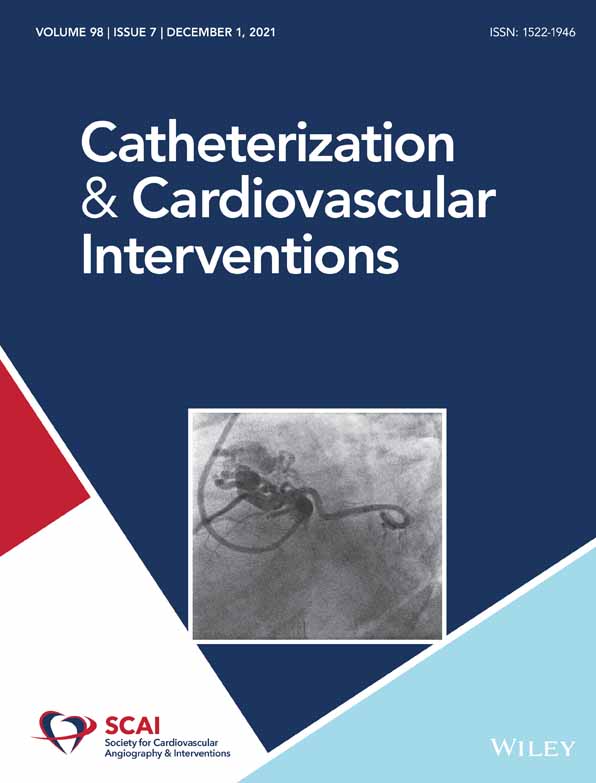Development and validation of a predictive model for bleeding after peripheral vascular intervention: A report from the National Cardiovascular Data Registry Peripheral Vascular Interventions Registry
Abstract
Objectives
To develop a model to predict risk of in-hospital bleeding following endovascular peripheral vascular intervention.
Background
Peri-procedural bleeding is a common, potentially preventable complication of catheter-based peripheral vascular procedures and is associated with increased mortality. We used the National Cardiovascular Data Registry (NCDR) Peripheral Vascular Interventions (PVI) Registry to develop a novel risk-prediction model to identify patients who may derive the greatest benefit from application of strategies to prevent bleeding.
Methods
We examined all patients undergoing lower extremity PVI at 76 NCDR PVI hospitals from 2014 to 2017. Patients with acute limb ischemia (n = 1600) were excluded. Major bleeding was defined as overt bleeding with a hemoglobin (Hb) drop of ≥ 3 g/dl, any Hb decline of ≥ 4 g/dl, or a blood transfusion in patients with pre-procedure Hb ≥ 8 g/dl. Hierarchical multivariable logistic regression was used to develop a risk model to predict major bleeding. Model validation was performed using 1000 bootstrapped replicates of the population after sampling with replacement.
Results
Among 25,382 eligible patients, 1017 (4.0%) developed major bleeding. Predictors of bleeding included age, female sex, critical limb ischemia, non-femoral access, prior heart failure, and pre-procedure hemoglobin. The model demonstrated good discrimination (optimism corrected c-statistic = 0.67), calibration (corrected slope = 0.98, intercept of −0.04) and range of predicted risk (1%–18%).
Conclusions
Post-procedural PVI bleeding risk can be predicted based upon pre- and peri-procedural patient characteristics. Further studies are needed to determine whether this model can be utilized to improve procedural safety through developing and targeting bleeding avoidance strategies.
CONFLICT OF INTEREST
AC Salisbury: none. D Safley: None. HD Aronow: None. KF Kennedy: None. WS Jones: Research Grants from the Agency for Healthcare Research and Quality, AstraZeneca, American Heart Association, Bristol-Myers Squibb, Doris Duke Charitable Foundation, Merck, Patient-Centered Outcomes Research Institute. Honoraria/other from the American College of Physicians, Bayer, Bristol-Myers Squibb, Daiichi Sankyo, and Janssen Pharmaceuticals. DN Feldman: None. E Secemsky: Research grants from NIH/NHLBI K23HL150290, Harvard Medical School's Shore Faculty Development Award, AstraZeneca, BD, Boston Scientific, Cook, CSI, Medtronic, Philips. He discloses consulting or speaking fees from Abbott, Bayer, BD, Boston Scientific, Cook, CSI, Inari, Janssen, Medtronic, Philips, and Venture Medical. TT Tsai: None. RR Attaran: None. JA Spertus: Related to this research, Dr. Spertus is the PI of a Data Analytic Center supported by the American College of Cardiology Foundation. Unrelated to this work, he discloses consulting services on the use of patient-reported outcomes for Amgen, Bayer, Myokardia, Merck, and Novartis. He also receives consulting fees for health services research from AstraZeneca, serves on a Scientific Advisory Board for United Healthcare and on the Board of Directors for Blue Cross Blue Shield of Kansas City. He owns the copyrights to the SAQ, KCCQ and PAQ and has an equity interest in Health Outcomes Sciences.
Open Research
DATA AVAILABILITY STATEMENT
Research data are not shared.




